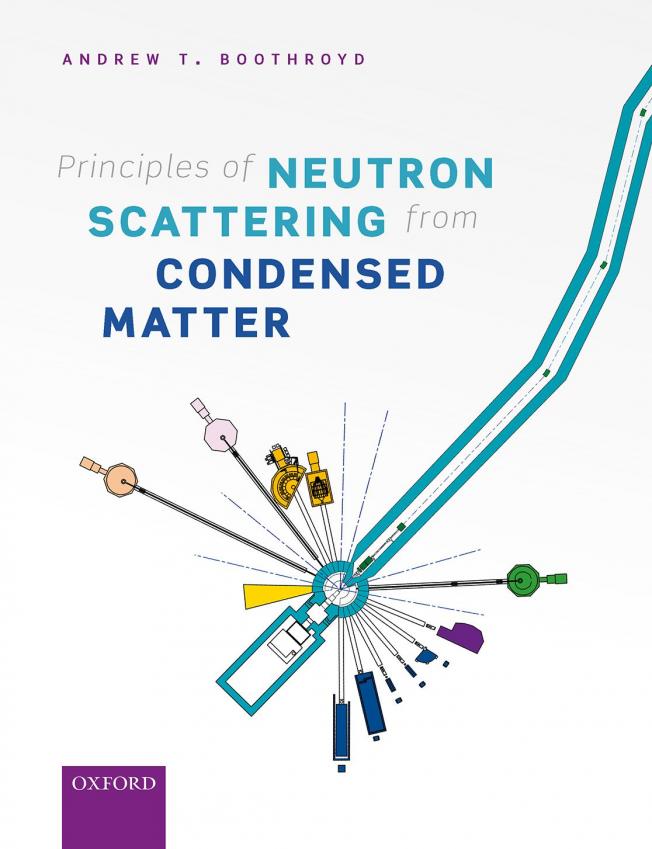Selective probing of magnetic order on Tb and Ir sites in stuffed Tb2Ir2O7 using resonant x-ray scattering.
Journal of physics. Condensed matter : an Institute of Physics journal 31:34 (2019) 344001-344001
Abstract:
We study the magnetic structure of the 'stuffed' (Tb-rich) pyrochlore iridate Tb2+x Ir2-x O7-y (x ∼ 0.18), using resonant elastic x-ray scattering (REXS). In order to disentangle contributions from Tb and Ir magnetic sublattices, experiments were performed at the Ir L 3 and Tb M 5 edges, which provide selective sensitivity to Ir 5d and Tb 4f magnetic moments, respectively. At the Ir L 3 edge, we found the onset of long-range [Formula: see text] magnetic order below [Formula: see text] K, consistent with the expected signal of all-in all-out (AIAO) magnetic order. Using a single-ion model to calculate REXS cross-sections, we estimate an ordered magnetic moment of [Formula: see text] at 5 K. At the Tb M 5 edge, long-range [Formula: see text] magnetic order appeared below ∼[Formula: see text] K, also consistent with an AIAO magnetic structure on the Tb site. Additional insight into the magnetism of the Tb sublattice is gleaned from measurements at the M 5 edge in applied magnetic fields up to 6 T, which is found to completely suppress the Tb AIAO magnetic order. In zero applied field, the observed gradual onset of the Tb sublattice magnetisation with temperature suggests that it is induced by the magnetic order on the Ir site. The persistence of AIAO magnetic order, despite the greatly reduced ordering temperature and moment size compared to stoichiometric Tb2Ir2O7, for which [Formula: see text] K and [Formula: see text], indicates that stuffing could be a viable means of tuning the strength of electronic correlations, thereby potentially offering a new strategy to achieve topologically non-trivial band crossings in pyrochlore iridates.Evidence for a J(eff)=0 ground state and defect-induced spin glass behavior in the pyrochlore osmate Y2Os2O7
PHYSICAL REVIEW B 99:17 (2019) ARTN 174442
First-order valence transition: Neutron diffraction, inelastic neutron scattering, and x-ray absorption investigations on the double perovskite Ba2PrRu0.9Ir0.1O6
Physical Review B American Physical Society 99:18 (2019) 184440
Abstract:
Bulk studies have revealed a first-order valence phase transition in Ba2PrRu1−xIrxO6 (0.10 ≤ x ≤ 0.25), which is absent in the parent compounds with x = 0 (Pr3+) and x = 1 (Pr4+), which exhibit antiferromagnetic order with transition temperatures TN = 120 and 72 K, respectively. In the present study, we have used magnetization, heat capacity, neutron diffraction, inelastic neutron scattering and x-ray absorption measurements to investigate the nature of the Pr ion in x = 0.1. The magnetic susceptibility and heat capacity of x = 0.1 show a clear sign of the first order valence phase transition below 175 K, where the Pr valence changes from 3+ to 4+. Neutron diffraction analysis reveals that x = 0.1 crystallizes in a monoclinic structure with space group P21/n at 300 K, but below 175 K two phases coexist, the monoclinic having the Pr ion in a 3+ valence state and a cubic one (Fm3m) having the Pr ion in a 4+ valence state. Clear evidence of an antiferromagnetic ordering of the Pr and Ru moments is found in the monoclinic phase of the x = 0.1 compound below 110 K in the neutron diffraction measurements. Meanwhile the cubic phase remains paramagnetic down to 2 K, a temperature below which heat capacity and susceptibility measurements reveal a ferromagnetic ordering. High energy inelastic neutron scattering data reveal well-defined highenergy magnetic excitations near 264 meV at temperatures below the valence transition. Low energy INS data show a broad magnetic excitation centred at 50 meV above the valence transition, but four well-defined magnetic excitations at 7 K. The high energy excitations are assigned to the Pr4+ ions in the cubic phase and the low energy excitations to the Pr3+ ions in the monoclinic phase. Further direct evidence of the Pr valence transition has been obtained from the x-ray absorption spectroscopy. The results on the x = 0.1 compound are compared with those for x = 0 and 1.First order valence transition: Neutron diffraction, inelastic neutron scattering and x-ray absorption investigations on the double perovskite Ba2PrRu0.9Ir0.1O6
(2019)
Role of defects in determining the magnetic ground state of ytterbium titanate
(2019)


